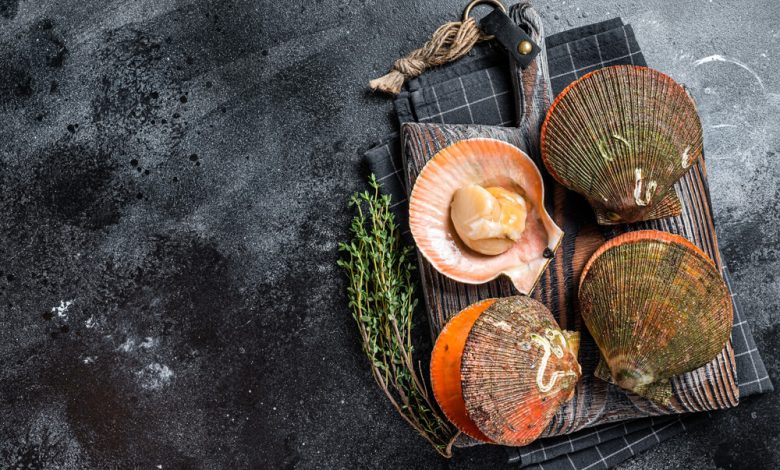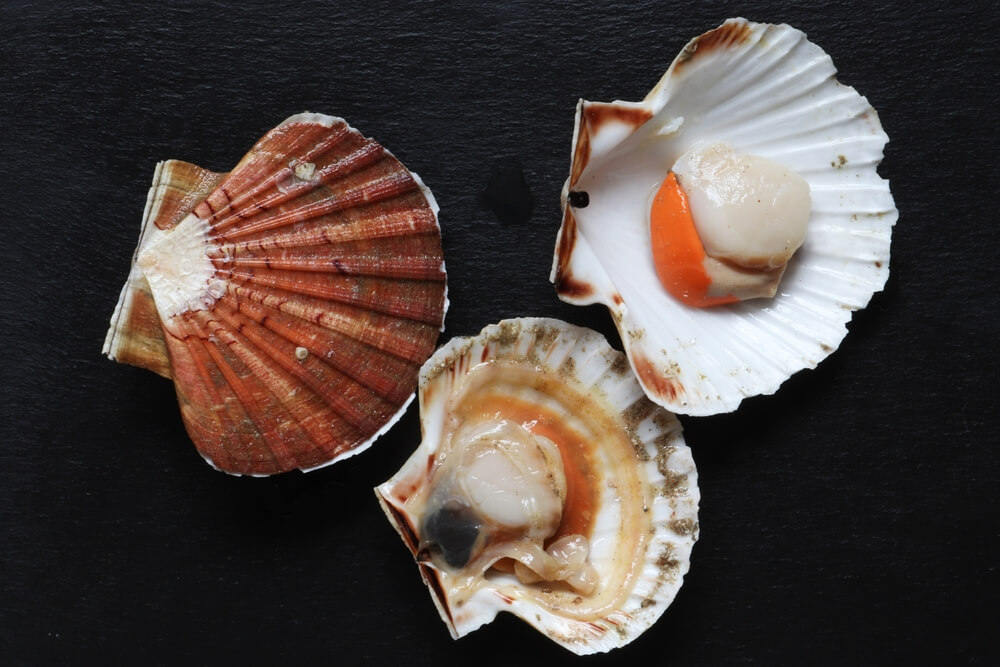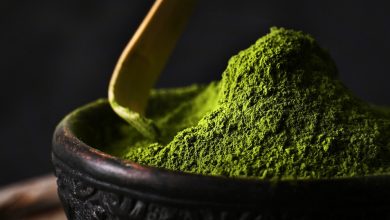What Are Scallops? A Guide to This Delicious Seafood

Scallops are a beloved seafood delicacy known for their tender texture and sweet flavor. This guide covers everything from understanding scallops and their popularity to distinguishing between bay and sea scallops. Learn about their nutritional benefits, tips for selecting fresh scallops, popular cooking methods and recipes, and sustainability concerns to help you make ethical choices. Discover more about this versatile seafood favorite!
Understanding Scallops and Their Popularity
Scallops are a type of shellfish that belong to the family Pectinidae. Known for their distinctive fan-shaped shells, scallops are bivalve mollusks, meaning they have two hinged shells. The part of the scallop that is most commonly consumed is the adductor muscle, which is responsible for opening and closing the shell.
The popularity of scallops in seafood cuisine can be attributed to their delicate texture and mildly sweet flavor, which makes them a versatile ingredient in various dishes. From seared scallops served with a simple lemon-butter sauce to more complex preparations in gourmet restaurants, these shellfish are beloved by chefs and food enthusiasts alike.
In addition to their taste, scallops are also prized for their nutritional benefits. They are low in fat and high in protein, making them a healthy choice for those looking to enjoy seafood without compromising on nutrition. Their growing popularity is also linked to an increased interest in sustainable seafood options; many scallop fisheries adhere to strict regulations to ensure environmental responsibility.
Understanding what scallops are and why they have gained such widespread popularity helps us appreciate this delectable type of shellfish even more. Whether you’re a seasoned seafood lover or new to exploring different types of shellfish, scallops offer an excellent culinary experience that’s hard to beat.
The Different Types of Scallops (Bay vs Sea Scallops)
When it comes to enjoying scallops, understanding the differences between bay scallops and sea scallops can enhance your culinary experience. Both types of scallops are prized for their sweet, delicate flavor and tender texture, but they have distinct characteristics that set them apart.
Bay scallops are smaller in size, typically measuring about a half-inch in diameter. They are found in shallow waters along the East Coast of the United States, particularly in bays and estuaries. Bay scallops are known for their sweeter taste and softer texture compared to sea scallops. Because of their small size, they cook quickly and are ideal for dishes that require minimal cooking time, such as sautéing or adding to pastas and salads.
On the other hand, sea scallops are much larger, often reaching up to two inches in diameter. They inhabit deeper ocean waters and can be harvested year-round. Sea scallops have a slightly firmer texture than bay scallops and possess a rich flavor that stands up well to searing or grilling. Their larger size makes them perfect for more substantial dishes where they can be the star ingredient.
While both bay and sea scallops offer unique qualities that cater to different culinary needs, choosing between them depends largely on the specific dish you plan to prepare. Understanding these differences allows you to select the right type of scallop for your recipe, ensuring optimal flavor and texture every time.
Nutritional Benefits of Eating Scallops

Scallops are a delicious and nutritious seafood option that can be a great addition to a balanced diet. Let’s explore the nutritional benefits of eating scallops and why they are considered one of the healthiest choices among seafood.
First, scallop nutrition facts highlight that these mollusks are an excellent source of high-quality protein. A typical serving of scallops provides around 20 grams of protein, which is essential for muscle repair, growth, and overall body maintenance. This makes them an ideal choice for those looking to increase their protein intake without consuming too many calories.
In addition to being high in protein, scallops are also a low-fat seafood option. They contain minimal amounts of saturated fat while providing healthy omega-3 fatty acids. These fatty acids play a crucial role in maintaining heart health by reducing inflammation and lowering the risk of cardiovascular diseases.
Scallops are also rich in essential vitamins and minerals. They provide significant amounts of vitamin B12, which is vital for nerve function and the production of red blood cells. Additionally, they offer important minerals such as magnesium, potassium, and zinc that support various bodily functions including immune health and bone strength.
The health benefits of scallops extend beyond their nutrient content. Their low-calorie profile makes them suitable for weight management diets while still providing satiety due to their high protein content. Furthermore, incorporating scallops into your diet can contribute to better overall health thanks to their combination of lean proteins, healthy fats, vitamins, and minerals.
Scallops stand out as a nutritious seafood choice with multiple health benefits. Whether you’re looking for high-protein seafood options or aiming to include more low-fat foods in your diet, adding scallops can be both delicious and beneficial for your well-being.
How to Choose Fresh and High-Quality Scallops at the Market
When it comes to buying fresh scallops, knowing what to look for can make all the difference in ensuring you get the highest quality seafood. Here are some key quality indicators for seafood that will help you select fresh shellfish at the market.
First, examine the color of the scallops. Fresh scallops should have a creamy white or slightly pinkish hue. Avoid any that appear overly white, as they may have been treated with chemicals to enhance their appearance. Also, steer clear of scallops that look dull or dry.
Next, consider the texture. High-quality scallops will feel firm and slightly moist to the touch. If they are mushy or slimy, it’s a sign that they’re not fresh and should be avoided.
Odor is another critical factor when selecting fresh shellfish. Fresh scallops should have a clean, briny scent reminiscent of the ocean. An off-putting fishy smell is an indicator that the scallops are past their prime.
Finally, if you’re buying live scallops in their shells, ensure that they are tightly closed or close when tapped lightly; this indicates they are still alive and fresh.
Popular Cooking Methods and Recipes for Scallops
Scallops are a versatile and delectable seafood option that can be prepared using various cooking methods, each bringing out unique flavors and textures. Understanding the best cooking techniques for scallops is essential to creating mouth-watering dishes.
One of the most popular cooking methods for scallops is searing. The searing scallops technique involves cooking them in a hot pan with a small amount of oil or butter until they develop a golden-brown crust on each side. This method locks in the natural sweetness of the scallops while giving them a crispy exterior and tender interior. To achieve perfect seared scallops, ensure they are dry before placing them in the pan and avoid overcrowding to get an even cook.
Grilling is another excellent method for preparing scallops, especially during warmer months when outdoor cooking is preferred. Grilling seafood recipes often include marinating the scallops beforehand to infuse additional flavors. When grilling, it’s crucial to use skewers or a grill basket to prevent the delicate scallops from falling through the grates. Cook them over medium-high heat for about 2-3 minutes per side until they are opaque and slightly firm.
For those looking for creative culinary inspiration, some of the best recipes with scallops include pairing them with rich sauces or incorporating them into pasta dishes. A classic example is Scallop Linguine, where perfectly seared or grilled scallops are combined with al dente pasta and a creamy garlic sauce.
Exploring different cooking methods for scallops can elevate your seafood repertoire and impress your guests with restaurant-quality dishes right at home. Whether you prefer searing or grilling, mastering these techniques will ensure your scallop recipes always turn out deliciously memorable.
Sustainability Concerns and How to Source Ethical Scallop Options
As awareness of environmental issues grows, consumers are increasingly seeking out sustainable fishing practices for shellfish, including scallops. Ensuring that your seafood choices are ethically sourced can help protect marine ecosystems and support responsible fisheries.
One key aspect of sustainable fishing practices for shellfish is the method used to harvest them. Traditional dredging techniques can cause significant damage to the ocean floor, disrupting habitats and leading to overfishing. In contrast, eco-friendly fishing methods for scallops include hand-diving and using specialized nets that minimize bycatch and habitat destruction.
To navigate the complexities of ethical seafood sourcing, you can refer to an ethical seafood sourcing guide. These guides typically provide information on which fisheries adhere to sustainable practices and offer certifications such as the Marine Stewardship Council (MSC) label. This certification ensures that the scallops are harvested in a way that maintains fish populations and respects marine habitats.
By prioritizing these eco-friendly approaches when purchasing scallops, you contribute to a more sustainable future for our oceans while enjoying delicious seafood responsibly.
Enjoying Scallops as Part of a Balanced Diet
Incorporating scallops into your diet can be a delightful and nutritious choice. These succulent shellfish are not only rich in protein but also packed with essential vitamins and minerals such as vitamin B12, magnesium, and potassium. Their low-calorie content makes them an excellent option for those looking to maintain or lose weight while still enjoying flavorful meals.
Scallops are versatile in the kitchen, lending themselves well to various cooking methods including grilling, sautéing, and baking. Pairing them with fresh vegetables or whole grains can create a well-rounded meal that satisfies both taste buds and nutritional needs.
While scallops offer numerous health benefits, it’s important to consume them as part of a balanced diet. Moderation is key, especially considering potential concerns like cholesterol levels for some individuals. As with any food, sourcing high-quality scallops from reputable suppliers ensures you get the best taste and nutritional value.
By thoughtfully incorporating scallops into your meals, you can enjoy their delicious flavor while reaping the benefits they offer as part of a healthy diet.


